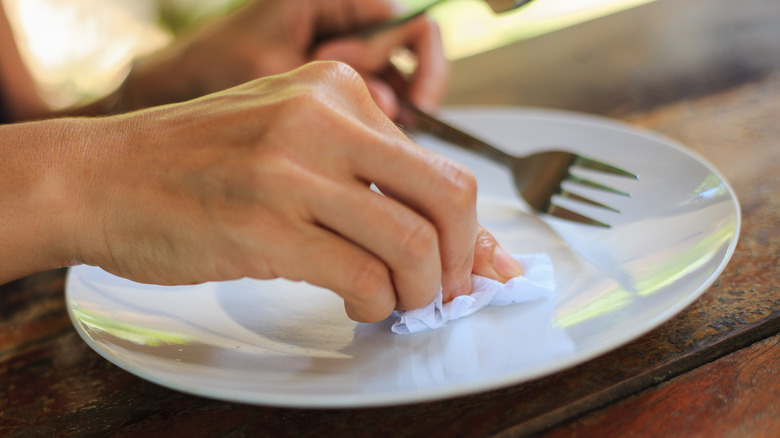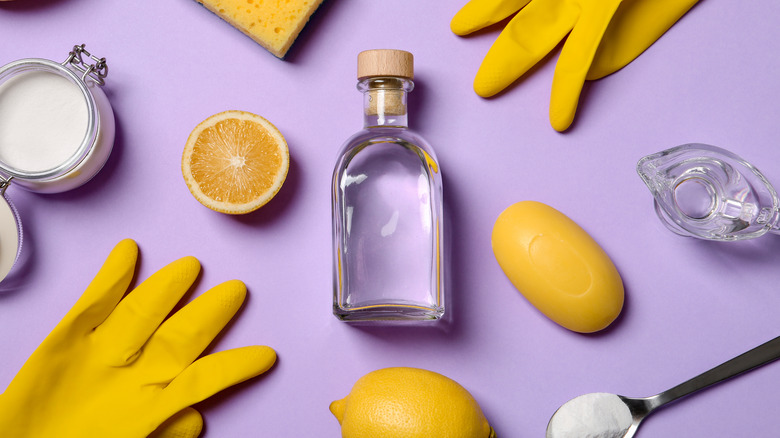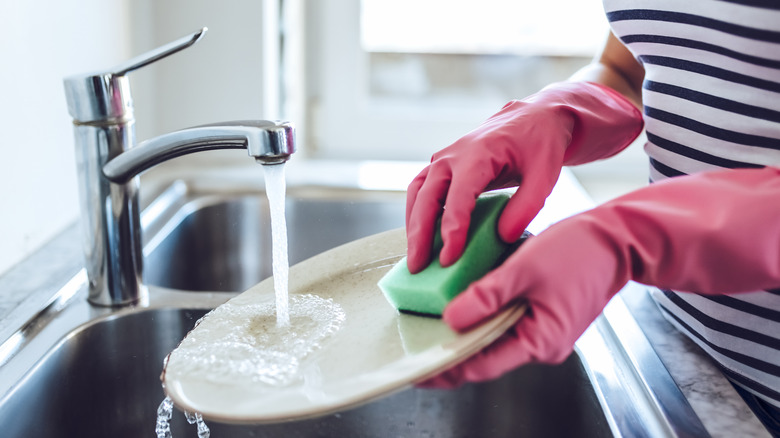Why You Should Use Baking Soda To Remove Knife Marks From Your Plates
You've just sat down to dinner and are ready to enjoy your first bite when you hear it — the unmistakable shriek of your knife scraping against the bottom of your plate. We've all been there, and if the noise weren't annoying enough, you may notice gray streaks on your tableware. You may also find these pesky scratches when you take your bowls or plates out of the dishwasher or if you've got a stack of plates and bowls teetering in the sink. Never fear, these streaks are by no means permanent and can be eliminated with a little elbow grease.
While you may have given up on your bowls and plates or resigned yourself to a life free of white porcelain, there is an easy solution for buffing away these metal marks, and you probably have everything you need in your pantry or cupboards. Best of all, it's non-toxic and safe to use around kids and pets. Read this guide to find out how to erase utensil marks from your plates and bowls.
What you'll need to clean metal marks
If you're ready to tackle those stubborn little metal marks on all of your favorite dishes, you'll need to gather a few items first. Luckily, you probably already have them at home. First, you'll need regular baking soda. Your grandma wasn't kidding when she said she uses baking soda for everything — from making the fluffiest bread to furniture polish, baking soda is truly one of the best household supplies you already own. Because of its powder form, it works as a gentle abrasive that can gently buff away organic materials such as dirt and grease, and yes, the stubborn streaks left from dining utensils, according to Live Science.
Next, you'll need some trusty dish soap. It doesn't matter what brand or type, just regular old dish soap will do the trick. This will allow the baking soda to have an extra "grip" when it comes in contact with the plate instead of just being run off when paired with vinegar or water. You'll also need a nonmetal scouring pad, as YMC notes. You can find these on many sponges or dish scrubbers.
Recipe for erasing scratches on your dishes
When you have all of your ingredients in front of you, it's time to assemble. First, as YMC says, mix the baking soda with water in a 2:1 ratio. Start small, so you don't end up wasting product unnecessarily; a few teaspoons should do the trick. Then add a few drops of your preferred dish soap to the scouring pad, followed by the baking soda paste, and begin gently buffing away at the metal marks. You may want to be seated and have all of your dishes set out in front of you, as this is absolutely going to take some elbow grease.
We recommend doing this process with gloves on. Even though these ingredients are gentle and nontoxic, any sustained exposure to cleaning agents such as dish soap and baking soda will cause dry skin and nails. On top of being uncomfortable, this can also leave your hands vulnerable to cracking.
Even if you don't see it lifting immediately infomercial style, the gentle abrasion from the baking soda paste will buff out the damage caused from your utensils, and soon you'll have sparkling, scratch-free dishes again!


